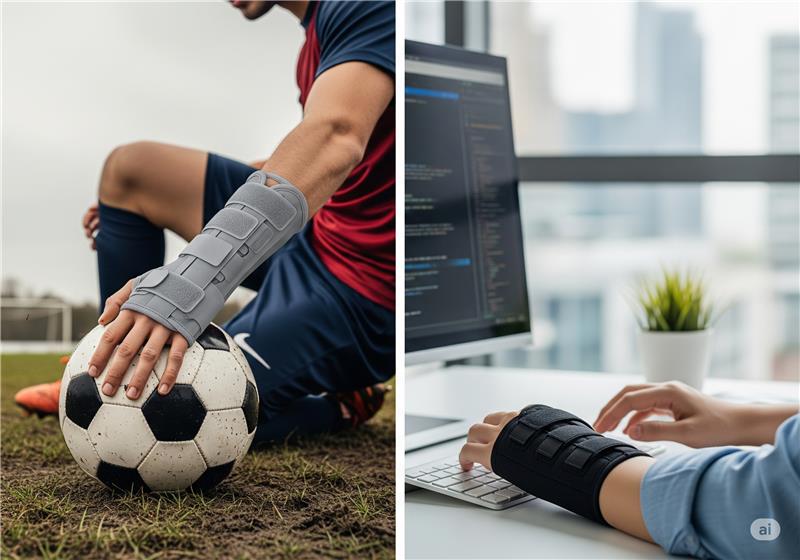Carpal Tunnel vs. Sprained Wrist: How a Wrist Brace Can Provide Pain Relief
Pain in the wrist can be a confusing symptom; different conditions can cause it. While a wrist brace is a common solution, the type of brace and how you use it can vary, depending on whether you’re dealing with a sprain or carpal tunnel syndrome. Therefore, understanding the key differences between these two conditions is the crucial first step toward finding effective pain relief.
Important Disclaimer: This information is for educational purposes only. Always consult with a healthcare professional for a proper diagnosis and treatment plan.
Understanding a Sprained Wrist
A sprained wrist is a common injury. It occurs when a sudden, forceful twist or a fall onto an outstretched hand stretches or tears the ligaments—the tough, fibrous tissues connecting the wrist bones.
Symptoms: You will likely feel immediate pain, swelling, tenderness, and possibly bruising. Furthermore, you may find the wrist difficult to move.
How a Brace Helps: A wrist brace for a sprain provides temporary immobilization. It limits movement, protects the injured ligaments, and uses gentle compression to reduce swelling. In short, the brace gives the ligaments the stability they need to heal properly. A physical therapist typically recommends wearing the brace during the day, which patients can then remove for gentle exercises.
Understanding Carpal Tunnel Syndrome
Conversely, carpal tunnel syndrome is a condition caused by a pinched nerve in the wrist. The median nerve and tendons pass through the carpal tunnel, a narrow passageway in the wrist. When the tunnel narrows—often due to repetitive hand motions—it puts pressure on the nerve.
Symptoms: You will typically experience tingling, numbness, and weakness in the hand and fingers (excluding the pinky finger). Often, the symptoms start at night and can feel like a dull ache or a sharp pain.
How a Brace Helps: A wrist brace for carpal tunnel syndrome is specifically designed to hold the wrist in a straight, neutral position. Therefore, this relieves pressure on the median nerve. Bracing is particularly effective at night because it stops the wrist from bending during sleep, a major contributor to symptoms.
How a Wrist Brace Provides Pain Relief
For both conditions, a wrist brace provides pain relief by stabilizing the joint and preventing movements that cause irritation. By immobilizing the wrist, a brace reduces the strain on damaged tissues, which allows them to heal. Specifically for carpal tunnel, it directly relieves the pressure on the nerve. Ultimately, choosing the right brace—one that is rigid for a sprain or designed specifically for night use for carpal tunnel—is the key to effective relief.
Conclusion
Whether you’re dealing with a sprained wrist or carpal tunnel syndrome, a well-chosen wrist brace can be a powerful tool for pain relief. By understanding the distinct needs of each condition, you can select the right brace to support your recovery and help you get back to your daily life.
Ready to find relief? Explore our selection of high-quality orthopedic supplies and wrist braces to find the perfect solution for your needs.




